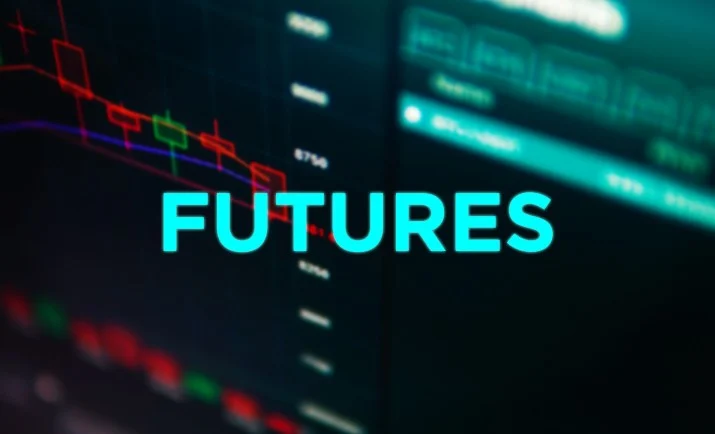Crypto futures are a popular and potentially lucrative trading instrument in the cryptocurrency market, allowing investors to speculate on the future price of various digital assets. By trading crypto futures, you can benefit from both rising and falling markets, hedge your portfolio, and gain exposure to leveraged trading. In this comprehensive guide, we will walk you through the process of getting started with crypto futures, exploring various aspects such as understanding the basics, choosing a platform, managing risk, and developing a trading strategy.
Understanding Crypto Futures
Before delving into the world of crypto futures trading, it’s crucial to have a basic understanding of what futures are and how they work. Crypto futures are financial contracts that obligate the buyer to purchase or the seller to sell an underlying cryptocurrency asset at a predetermined price on a specific future date.
Key terms and concepts in crypto futures trading include:
- Long position: A long position is taken when a trader expects the price of the underlying cryptocurrency to rise in the future.
- Short position: A short position is taken when a trader expects the price of the underlying cryptocurrency to fall in the future.
- Leverage: Leverage allows traders to borrow capital from the exchange or broker to increase their position size, potentially amplifying profits or losses.
- Margin: Margin refers to the initial deposit required to open a leveraged position.
- Liquidation: Liquidation occurs when a trader’s position is forcibly closed by the exchange or broker due to insufficient margin to cover potential losses.
With a basic understanding of crypto futures, let’s explore the various steps involved in getting started with crypto futures trading.
How to Get Started with Crypto Futures
Step 1: Choose a Crypto Futures Trading Platform
The first step in getting started with crypto futures is to choose a reliable and reputable trading platform. There are numerous platforms available, each with its features, fees, and supported cryptocurrencies. Some popular options include:
- Binance Futures
- FTX
- Bybit
- BitMEX
- Deribit
- Kraken Futures
When choosing a platform, consider factors such as available trading pairs, liquidity, fees, user interface, customer support, and security. It’s essential to choose a platform that meets your specific needs and preferences.
Step 2: Create an Account and Complete Verification
Once you’ve chosen a suitable crypto futures trading platform, you’ll need to create an account and complete any required verification steps. This may involve providing personal information and documentation, such as proof of identity and address, to comply with KYC (Know Your Customer) and AML (Anti-Money Laundering) regulations.
Some platforms also require additional verification for futures trading, as it involves leveraged trading and increased risk.
Step 3: Fund Your Account
After setting up your account and completing verification, the next step is to fund your account with the currency you will use to trade crypto futures. Most platforms require you to deposit cryptocurrency (e.g., Bitcoin, Ethereum) to trade futures. This typically involves generating a deposit address for the specific cryptocurrency you wish to use and sending the funds from your external wallet or another exchange.
Step 4: Understand the Platform and Futures Contract Specifications
Before diving into crypto futures trading, it’s essential to familiarize yourself with the platform’s interface and the specific contract specifications for each futures market. This may include:
- Contract size
- Tick size
- Minimum and maximum price fluctuations
- Leverage and margin requirements
- Expiration date and settlement procedure
- Fees and funding rates
Understanding these details will help you make informed trading decisions and minimize the risk of unexpected losses.
Step 5: Develop a Trading Strategy
Developing a solid trading strategy is a crucial step in getting started with crypto futures. A well-planned strategy will help you manage risk, maximize profits, and minimize losses. Consider the following factors when developing your trading strategy:
- Market analysis: Perform both fundamental and technical analysis to gain a better understanding of the market conditions and potential price movements. Fundamental analysis involves evaluating factors such as project development, team quality, and market sentiment, while technical analysis focuses on historical price data and chart patterns.
- Risk management: Establish a robust risk management plan to protect your capital and minimize potential losses. This may include setting stop-loss orders, determining position sizes based on a percentage of your trading capital, and using proper leverage levels.
- Entry and exit points: Identify clear entry and exit points for your trades based on your market analysis and risk management plan. This can help you stay disciplined and avoid emotional decision-making.
- Timeframe: Determine the timeframe for your trades, whether you plan to engage in day trading, swing trading, or longer-term position trading. This will help you focus on the appropriate charts and timeframes for your analysis.
- Record-keeping and performance tracking: Keep a detailed record of your trades, including entry and exit points, position sizes, and outcomes. Analyze your performance regularly to identify areas for improvement and adjust your strategy accordingly.
Step 6: Start Trading Crypto Futures
With your account funded and a trading strategy in place, you’re now ready to start trading crypto futures. Begin by selecting the futures market you wish to trade and familiarize yourself with the order types available on your chosen platform, such as limit orders, market orders, and stop orders.
Place your first trade by entering your desired position size, leverage, and order type. Monitor your open positions closely, and don’t forget to set stop-loss orders to manage risk effectively. As you gain experience and confidence, you can explore more advanced trading techniques, such as using multiple timeframes, incorporating additional indicators, and experimenting with various risk management strategies.
Step 7: Continuous Learning and Improvement
Successful crypto futures trading requires continuous learning and improvement. Stay up-to-date with market news, developments in the cryptocurrency industry, and changes to the trading platform and contract specifications. Regularly review your trading strategy and performance to identify areas for improvement and adapt to changing market conditions.
By following this comprehensive guide, you’ll be well-equipped to get started with crypto futures trading and navigate the exciting world of digital asset speculation. Remember to practice sound risk management, develop a solid trading strategy, and continuously learn and improve to maximize your chances of success in the fast-paced world of cryptocurrency futures.
I’m Riva, and I love trading crypto. I got into it a few years ago, and I’ve never looked back. I’m 35 years old now, and I’ve been able to make a good living doing what I love.
I started out as a retail trader, but eventually moved on to trading crypto full-time. It’s been a great experience, and I don’t see myself stopping anytime soon.

